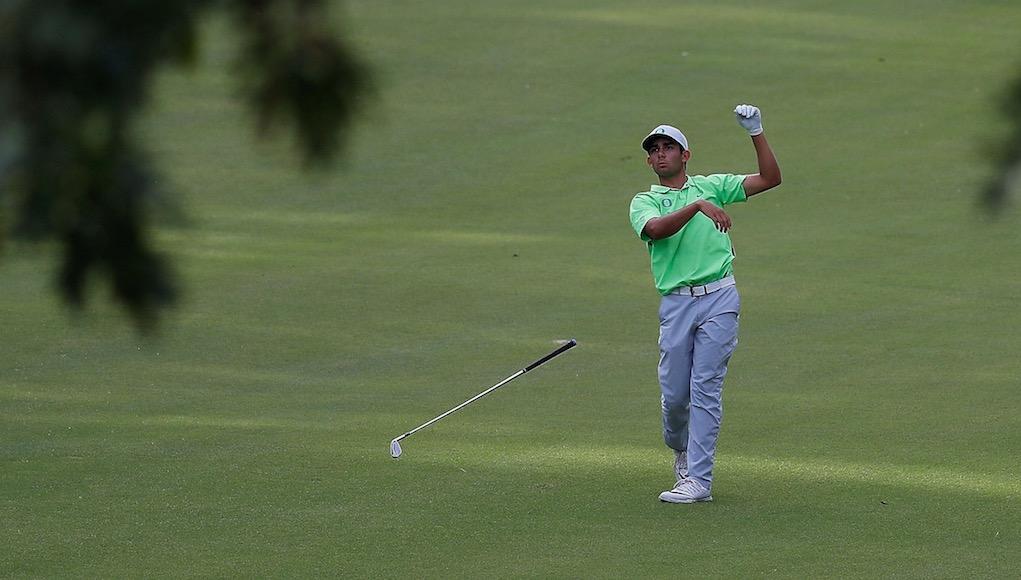Introduction
In the world of golf, where accuracy and skill are crucial, the way players practice can significantly impact their performance. among various training methods, slow-motion swing practice has gained recognition for its ability to not only improve mechanics but also enhance cognitive functions. This article delves into the psychological aspects that make slow-motion practice effective, highlighting how it can boost motor skills, sharpen precision, and ultimately elevate performance on the golf course.Studies show that cognitive processes related to motor learning are greatly influenced by the speed of practice. By slowing down their swings, golfers engage in a more thoughtful and reflective training session that enhances focus and awareness of body mechanics. This intentional engagement leads to better muscle memory and technique refinement—essential elements for executing consistent swings during competitive play. Additionally, integrating slow-motion techniques into training routines can improve decision-making abilities due to increased mental clarity.
As we explore further into the cognitive benefits of slow-motion swing practice in golf, this discussion aims to clarify the psychological mechanisms involved. It will illustrate how a simple change in training methodology can lead to meaningful improvements in both skill level and overall performance.
Cognitive Mechanisms of Slow-Motion Swing Practice
Engaging in slow-motion swing exercises fosters an elevated level of cognitive awareness vital for mastering complex swing techniques. By reducing physical motion speed, golfers are encouraged to concentrate on essential elements such as biomechanics and body alignment while enhancing their perceptual learning capabilities.
The cognitive load theory posits that when learners tackle intricate tasks at a manageable pace—one that minimizes overload—they become more adept at absorbing necessary data for skill enhancement. Furthermore, there is a strong connection between mental imagery and physical execution within slow-motion practices. Golfers can employ visualization techniques during these sessions; imagining their swings helps strengthen neural pathways linked with motor skills which translates into improved execution during full-speed swings. This process bolsters muscle memory, allowing players to create mental templates for desired swing mechanics applicable during actual gameplay—resulting in greater precision and consistency.
Additionally, practicing slowly cultivates a state of mindfulness, which has been shown to enhance focus while alleviating anxiety often experienced under competitive pressure. By stepping back from fast-paced routines, golfers develop calmness that improves concentration on each shot taken—a crucial factor for better decision-making on the course.
Moreover, this analytical approach necessitates a level of focused attention that is critical for decision-making in competitive environments. By identifying subtle nuances in their swings, players develop a keen ability to assess the effectiveness of their techniques. The cognitive process activated during slow-motion training ultimately aids in the development of a golfer’s mental framework.
Motor Skill Acquisition through Deliberate Slow Practice
Deliberate slow practice enhances motor skill acquisition by enabling golfers to scrutinize every aspect of their swing mechanics closely. Practicing at reduced speeds allows players to capture subtle details often missed during regular sessions—a critical factor for refining technique as it promotes repetition of specific muscle patterns while deepening understanding about movement dynamics.
Moreover, this focused engagement aids neural pathway progress associated with motor skills; repeated motions encourage visualization strategies allowing golfers not just mentally rehearse but also reinforce desired outcomes effectively embedding complex movements into long-term memory—enhancing recall when needed most during playtime scenarios.
Consequently, confidence and consistency rise as athletes become more fluid under pressure thanks largely due mindful approaches helping them identify errors swiftly while making real-time adjustments beneficially impacting competitive situations.
The psychological dimensions inherent within this form of training significantly contribute towards overall growth regarding motor skills development too! Engaging regularly nurtures qualities like patience alongside resilience—both essential traits required across sports disciplines alike! The controlled environment provided by slower-paced sessions encourages individuals embracing challenges viewing mistakes merely as opportunities ripe with potential lessons learned along paths toward advancement!
Mindfulness Techniques for Perfecting Golf Skills
Integrating mindfulness practices notably within slow motion drills ,empowers golfers aiming higher levels performance via sharpening cognition & enhancing bodily awareness concurrently! As they consciously decelerate movements cultivated acute presence fostering deeper concentration leading them towards:
- Visualizing each component: From stance all way follow-through solidifying those mechanics firmly inside memories.
- Assessing grip/posture: With precision leading small yet impactful refinements throughout technique.
- implementing feedback loops: Evaluating what works best according individual dynamics observed throughout practices.
Moreover engaging consistently facilitates brain’s capacity processing information efficiently creating neurological pathways supporting improved muscle retention/execution overall! in doing so players find themselves entering states flow where challenges align harmoniously alongside developed skills yielding remarkable results summarized below:
| Cognitive Benefits | Your Performance Impact! |
|---|---|
| A heightened focus & concentration level! | Smoother swinging consistency achieved! |
| A deeper understanding regarding bodily mechanics! | A more effective power transfer realized! |
| An enhanced muscle memory established! | A greater shot execution precision attained! |
Incorporating mindfulness strategies enriches holistic approaches extending beyond mere physicality alone; prioritizing mental engagement enables achieving profound insights translating directly onto scores improving steadily over time!
Building Precision & Consistency via Visualization Techniques
Utilizing visualization methods integrated within golfing practices serves powerful tools elevating both accuracy alongside reliability levels achieved consistently over time! Slowing down allows focusing fundamental aspects like grip/stance/body alignment reinforcing muscular memories whilst encouraging attentive mindsets necessary attaining consistent results out there!
This deliberate pacing clarifies components minimizing tendencies rushing thus promoting thoughtful executions rather!
Cognitively rehearsed aspects nurture spatial relationship awareness throughout swings enabling identification errors experimenting corrections without immediate pressures looming overheads constantly reminding us about performances expected right away! Key benefits include:
- Improved focus: Concentration reduces distractions refining clarity immensely !
- Heightened Spatial perception: Visualizations aid understanding executing proper alignments effectively !
- Enhanced Confidence: Familiarity breeds assurance boosting self-belief tremendously !
Transformations from visualizations actual performances hinge upon repeated structured drill engagements tracking metrics influencing games positively over time!
A simple table could help monitor progress made:
| Practice Session | Swing Tempo (seconds) | Main Focus Areas | |||
|---|---|---|---|---|---|
| Session 1 | 3 .5 | Grip Setup | |||
| Session 2 | 4 .0 | Backswing Mechanics | |||
| Session 3 | 3 .0 | ||||
| Follow Through Alignment | |||||
This structured approach facilitates measurable improvements allowing assessments across multiple sessions employing methodologies gradually leading reliable swinging positively impacting golfing performances out there !
Psychological Strategies Enhancing Performance Levels In Golf
Integrating slower paced drills becomes instrumental enhancing both mental acuity along physical prowess exhibited regularly ! Such techniques foster connections between cognition processing/motor executions dissecting movements methodically ensuring refined techniques emerge boosting self-awareness considerably !
To maximize these benefits consider employing various strategies including:
- Visualization :  ;Envision desired outcomes reinforcing accomplished goals effectively.
- Mindfulness :  ;Being present enhances focus reducing anxieties faced frequently.
- Positive Self-talk :  ;Encouragement boosts motivation maintaining spirits high even amidst challenges faced.
Moreover integrating structured methodologies leads critically important long-term enhancements seen across metrics evaluated thoroughly dissected phases developing thorough models mentally constructed aiding consistencies witnessed increasing resilience displayed competitively too! Below summarizes correlations found between psychological tactics employed versus improved swinging performances noted :
| Visualization | Improved swinging accuracies noted! |
| Mindfulness | Reduced anxieties experienced! |
| Positive Self-Talk | Confidence/motivation heightened! |
The cognitive advantages derived from implementing slower paced drills extend far beyond mere technical refinements alone! Engaging deliberately fosters neural pathways associated with enhanced retention ultimately improving overall effectiveness witnessed consistently thereafter. Recent research supports claims suggesting incorporating such methodologies offers compelling strategies unlocking potentials previously untapped paving ways cultivating patience/precision invaluable traits sought after both inside/outside courses alike! Thus embracing these forms stands pivotal recommendations aspiring elevate games reaching new heights altogether!!

unlocking Your Golf Game: The Surprising Cognitive Boost of Slow-Motion Swing Practice
Meta Title
Unlocking Your Golf Game: The Cognitive Benefits of Slow-Motion Swing Practice
Meta Description
Discover how slow-motion swing practice can enhance your cognitive skills and improve your golf game. Unlock the secrets to better performance on the course!
The cognitive advantage of Slow-Motion Swing practice
Incorporating slow-motion practice into your golf routine can elevate your game in unexpected ways. Not only does it enhance your swing, but it also stimulates cognitive growth. Here, we delve into the fascinating relationship between slow-motion practice and cognitive advancement in golf.
Understanding Slow-Motion Practice
What is Slow-Motion Practice?
Slow-motion practice involves executing golf swings at a substantially reduced speed. This technique allows golfers to focus on their form, mechanics, and thought processes without the pressure of performing at full speed.
Benefits of Slow-Motion Swing Practice
- Improved Spatial Awareness
– Practicing in slow motion enhances spatial perception, allowing golfers to better visualize their swing mechanics. This improved awareness helps in making necessary adjustments for optimal performance.
- Enhanced Motor Learning
– Engaging in slow-motion swings allows the brain to process movements more effectively, resulting in improved muscle memory. This is essential for building a reliable and consistent swing.
- Increased Focus and Concentration
– The deliberate nature of slow-motion practice cultivates a greater sense of focus, encouraging golfers to concentrate on every aspect of their swing. This heightened attention leads to better overall execution.
Practical Tips for Implementing Slow-Motion Practice
- Set clear Goals: Define specific skills or movements you want to enhance during your slow-motion practice sessions.
- Create a Structured Routine: dedicate 15-20 minutes per practice session, especially two to three times a week.
- Film Your Swings: Use a camera to record your slow-motion swings. Reviewing the footage helps identify areas for improvement.
- Incorporate variety: Mix slow-motion swings with regular-speed swings for a comprehensive practice experience.
Case studies and Real-World applications
Case Study 1: John, the Amateur Golfer
John, an avid golfer, struggled with consistency until he embraced slow-motion practice. After a few weeks, he noticed a significant improvement in his swing mechanics and overall game performance.
Case Study 2: Sarah, the Competitive Player
Sarah, a competitive golfer, integrated slow-motion swings into her training regimen. She experienced a cognitive boost that translated into improved strategic thinking during competitive rounds.
The Science Behind Slow-Motion Practice
Cognitive Benefits Supported by Research
Recent studies indicate that engaging in slow-motion practice can lead to improved spatial reasoning, cognitive flexibility, and problem-solving abilities. The brain’s ability to analyze movements in a slower context allows for deeper learning and retention.
| Benefit | description |
|——————————-|——————————————————————|
| Spatial Awareness | Enhanced understanding of swing mechanics and body alignment |
| Motor Learning | Improved muscle memory through deliberate practice |
| Focus and Concentration | Increased attention to detail results in better execution |
Advanced Techniques to Enhance Slow-Motion Practice
- Visualization Techniques: Mentally rehearse your swing while practicing slowly to reinforce your improvements.
- Breathing Exercises: Incorporate breathing techniques to remain calm and focused, enhancing cognitive function.
- Mindfulness training: Practicing mindfulness can further help in maintaining concentration during your swings.
first-hand Experiences from Golf Professionals
Many professional golfers advocate for the integration of slow-motion practice. They report that the practice not only helps with technique but also sharpens their mental game. This dual benefit can transform a golfer’s overall performance.
Conclusion
By embracing slow-motion swing practice, golfers can unlock cognitive benefits that enhance their game. This innovative approach offers a value-added dimension to customary training methods, focusing on the mind’s role in achieving excellence on the golf course.





